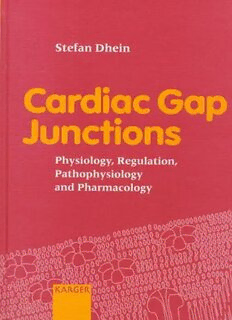
Cardiac Gap Junctions: Physiology, Regulation, Pathophysiology and Pharmacology PDF
155 Pages·1998·1.769 MB·English
Most books are stored in the elastic cloud where traffic is expensive. For this reason, we have a limit on daily download.
Preview Cardiac Gap Junctions: Physiology, Regulation, Pathophysiology and Pharmacology
Description:
The most important communication mechanism between cardiac cells is electrical transmission via low resistance pathways, the so-called gap junction channels. This book provides a comprehensive overview of what is known about cardiac gap junctions. An introduction into the various aspects of activation propagation and coupling in the heart is followed by a detailed description of the structure and diversity of gap junctions, including amino acid sequences and species variability. Subsequent chapters discuss their distribution, physiology and functions and the regulation of expression. The author then goes on to put these basic findings into a clinical context - the changes of gap junction distribution in the course of cardiac disease and their implications. A further chapter presents pharmacological approaches to the modulation of gap junction channel conductivity and outlines possible therapeutic strategies. The final part of the book describes the methods of investigation including double cell voltage clamp, immunohistochemistry, isolation procedures for gap junctions and dye coupling assays.
See more
The list of books you might like
Most books are stored in the elastic cloud where traffic is expensive. For this reason, we have a limit on daily download.
